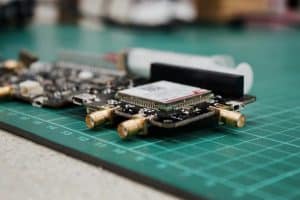The Role of SOC Services in Securing IoT Devices
The rapid expansion of the Internet of Things (IoT) has revolutionized industries worldwide. However, this connectivity comes with significant safety risks. System-on-a-Chip (SOC) services protect IoT devices from cyber threats while contributing to energy efficiency. Here, we will explore how these services are crucial in securing IoT devices.

Understanding IoT Device Vulnerabilities
Due to their widespread use and limited safety, IoT devices are often targets for cybercriminals. Many interconnected systems lack proper encryption, making them susceptible to unauthorised access. SOC services help mitigate these vulnerabilities by continuously monitoring network activity. Additionally, this technology in integrated systems contributes to lower power consumption, optimising overall energy usage.
Data Encryption and Privacy Protection
Such efficient solutions enforce robust encryption protocols, ensuring IoT data remains inaccessible to cybercriminals. Encryption protects sensitive information, maintains user privacy, and prevents unauthorised data access or manipulation. This proactive approach guarantees IoT devices operate in a protected, privacy-focused environment.
Threat Detection and Response
These efficient services excel at detecting and responding to threats quickly. Immediate action is essential when an IoT system is compromised to prevent malware or data breaches. This swift response minimises the impact on business operations and protects sensitive information. Importantly, the efficient use of such technology enhances safety and reduces the power needed for threat detection.
Vulnerability Assessment and Penetration Testing
These services regularly conduct vulnerability assessments to identify security gaps within interconnected systems. Penetration testing simulates attacks, allowing SOC teams to evaluate the resilience of IoT networks. These tests reveal weaknesses that could be exploited by cyber threats, enabling timely remediation. Regular assessments and testing ensure that IoT devices are fortified against emerging vulnerabilities.
Incident Management and Reporting
Effective management is crucial when a safety incident occurs. These solutions provide detailed reports on threats, affected devices, and actions taken. Incident management ensures that all stakeholders are aware of the risks. This technology’s efficiency ensures these processes are conducted with minimal energy expenditure.
Remote Device Management
These solutions facilitate secure remote management of interconnected systems, ensuring timely updates and safety patches. Remote management allows the providers to monitor devices continuously, addressing issues before they escalate. These services ensure that all devices remain up-to-date and protected from potential threats.
Compliance and Regulatory Requirements
Compliance with industry regulations is another critical aspect of securing interconnected systems. Many industries have specific requirements for data protection and cybersecurity. Efficient services, such as Identity as a Service (IDaaS), can streamline the management of user identities and access control, ensuring that only authorized individuals access sensitive information. By integrating IDaaS into security protocols, businesses can more easily meet these regulatory standards, enhancing their overall compliance posture. This compliance protects the organization and builds trust with customers and partners.
Continuous Improvement and Adaptation
The cybersecurity landscape is constantly evolving, and so are the threats to IoT devices. The solutions must adapt to these changes to remain effective. Continuous improvement drives SOC operations, as teams consistently update strategies and tools. This adaptability ensures that businesses are always protected against the latest threats.
Enhancing Network Visibility
Trusted system-on-a-Chip services provide businesses with enhanced visibility into their networks. Understanding how data flows and where potential vulnerabilities lie is essential for effective protection. SOC teams map network activity with advanced tools, providing businesses a clear safety overview. This insight is invaluable for making informed decisions about security investments.
Building a Strong Security Culture
A strong safety culture is critical for any organisation that relies on IoT devices. The efficient solutions contribute to this culture by promoting awareness and education about cybersecurity. By working with expert teams, businesses can ensure employees understand security’s importance and their role. Furthermore, using energy-efficient SOC technology aligns with broader organisational goals for sustainability.
To truly protect your IoT systems, why settle for anything less than expert SOC services? The above-mentioned benefits make it clear that partnering with a reputable provider is essential. Investing in expert solutions ensures your business remains safe, efficient, and future-ready. Protect your IoT infrastructure by choosing the best in the industry today.

